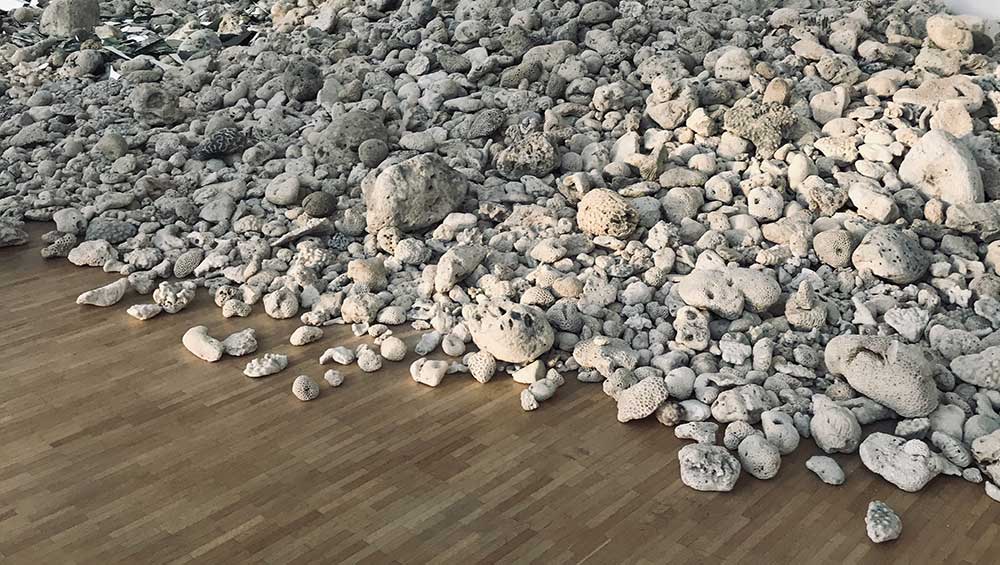
Jaeeun Choi, White Death, 2023. Installation view, La Vita Nouva, Ginza Maison Hermès, Japan, 13 October 2023 – 24 January 2024.
Ginza Maison Hermès, Japan
14 October 2023 – 28 January 2024
by KANAE HASEGAWA
The South Korean artist Jaeeun Choi continues her dialogue with nature at the exhibition La Vita Nuova, at Ginza Maison Hermès Le Forum. Coming out of the lift into the gallery space Le Forum, on the eighth floor of Ginza Maison Hermès, visitors encounter World Underground Project, a bundle of 200 sheets of 50 sq cm washi papers that were variously buried in seven different countries before being taken out after five years. Since 1986, Choi has buried washi papers in the soil at Kyŏngju in South Korea and in Fukui, Japan. Over the years, the washi paper has turned different colours, absorbing soil and microbes from the region in which it was buried. Choi calls these papers Reply from the Earth, in what she says is a dialogue between the artist and the Earth. “Papers buried in Nairobi became fossilised whereas, even after five years in the soil, the paper buried in Karuizawa, Japan, came out almost intact. Depending on the soil, sometimes the paper went missing,” says Choi.
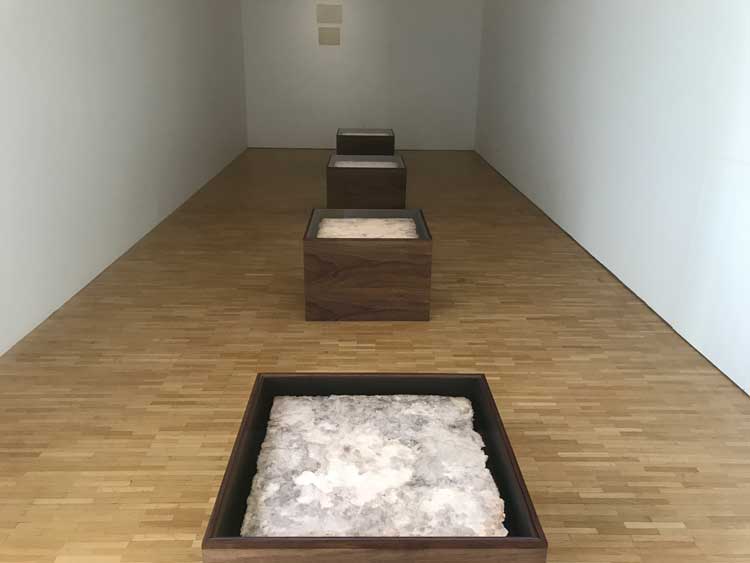
Jaeeun Choi, World Underground Project - Reply from the Earth (Kyngu ju/ Fukui), 1986-91. Installation view, La Vita Nouva, Ginza Maison Hermès, Japan, 13 October 2023 – 24 January 2024.
Born in 1953 in Seoul, Choi, whose artistic career spans 40 years, moved to Japan in 1976. She met the progressive artist Hiroshi Teshigahara, the third-generation master of the Sogetsu school of avant-garde flower arrangement, under whom she learned the Japanese approach to Ikebana flower arrangement. “Flower arrangement fundamentally starts from ‘cutting’ plants from the soil where they were growing. I started to wonder what happens to the soil that was part of the plant’s ecological cycle once the plant is taken away,” Choi says. She began to approach flower arrangement very differently from normal. Rather than cutting the flower and its stems and leaving the soil behind, she incorporated the soil as an inseparable element of the life of a flower. Soil has been an important element in her artistic expression since then.
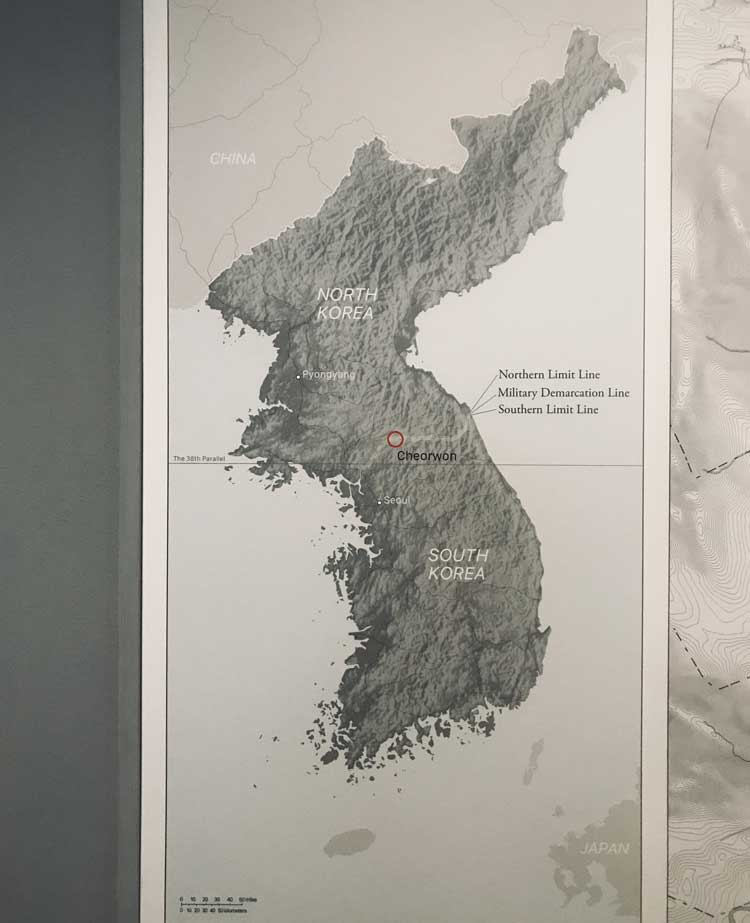
Jaeeun Choi, Dreaming of Earth Project, 2015-ongoing, installation view, La Vita Nouva, Ginza Maison Hermès, Japan, 13 October 2023 – 24 January 2024.
On display at Maison Hermès exhibition, Choi’s Dreaming of Earth Project, which Choi started in 2015 and is ongoing, is about her dream of ecosystems realised through nature’s self-generation. In this case, she concentrates on the Korean Demilitarised Zone (DMZ), a strip of land about 260km (160 miles) long and 4km (2.5 miles) wide that runs across the Korean Peninsula, dividing North and South Korea, and was created as a buffer zone after the end of the Korean war in 1953.
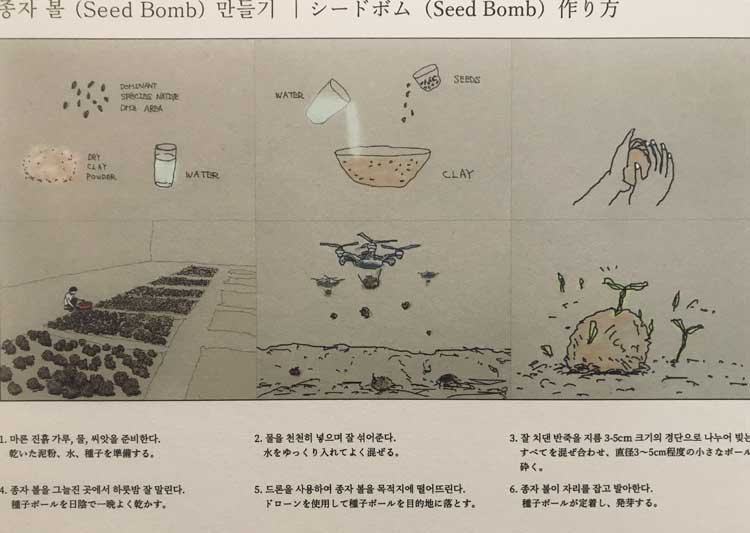
Jaeeun Choi, Manual for Seed Bomb, 2020- ongoing, installation view, La Vita Nouva, Ginza Maison Hermès, Japan, 13 October 2023 – 24 January 2024.
Through various data sources, including Nasa, Choi discovered that in the subsequent 70 years, in which tensions between North and South Korea have made it impossible for people to enter the area, the ecological system in the DMZ has deteriorated, causing forests, flora and fauna to die. However, she realised that, even though people can’t enter the zone, there are ways to help the ecosystem recover. Choi’s hope is that dropping seeds from the sky will enable plants to grow there again. On display in the gallery are Choi’s research and her mapping of 5,000 plants and species that are adaptable and could help the ecosystem to recover. She devised a formula for seed bombs – plant seeds mixed with water and mud, which will be created by local people – that can be dropped on to the DMZ from drones. The project is a measure of Choi’s determination that humans should proactively intervene in nature’s ecosystem.
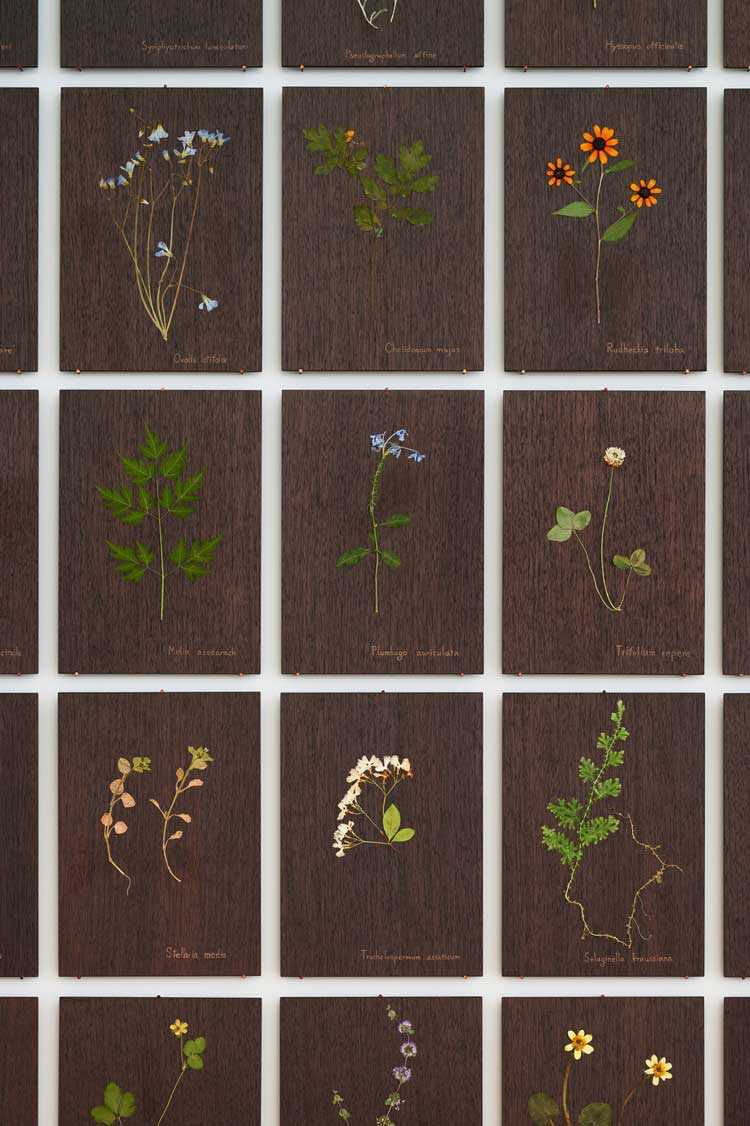
Jaeeun Choi, A Poet’s Atelier - To Call by Name, 2023, installation view, La Vita Nouva, Ginza Maison Hermès, Japan, 13 October 2023 – 24 January 2024. Photo: © Nacása & Partners Inc. / Courtesy of Fondation d’enterprise Hermès.
A common theme that runs throughout her work is human cohabitation with all living organisms – flora and fauna and human. This is also expressed in the newly commissioned works. A Poet’s Atelier is an installation conceived as Choi’s dream atelier. It comprises various works, including To Call By Name, in which the names of 156 endangered plants are written on the wall in charcoal, and When We First Met, panels of pressed flowers and grass that Choi collected during her morning walks in Tokyo and Kyoto from February to August 2023. “I wanted to call each living thing’s name. It is easy not to know the name and the existence of tiny plants while they become endangered. I wanted to shed light on these lives,” she says.
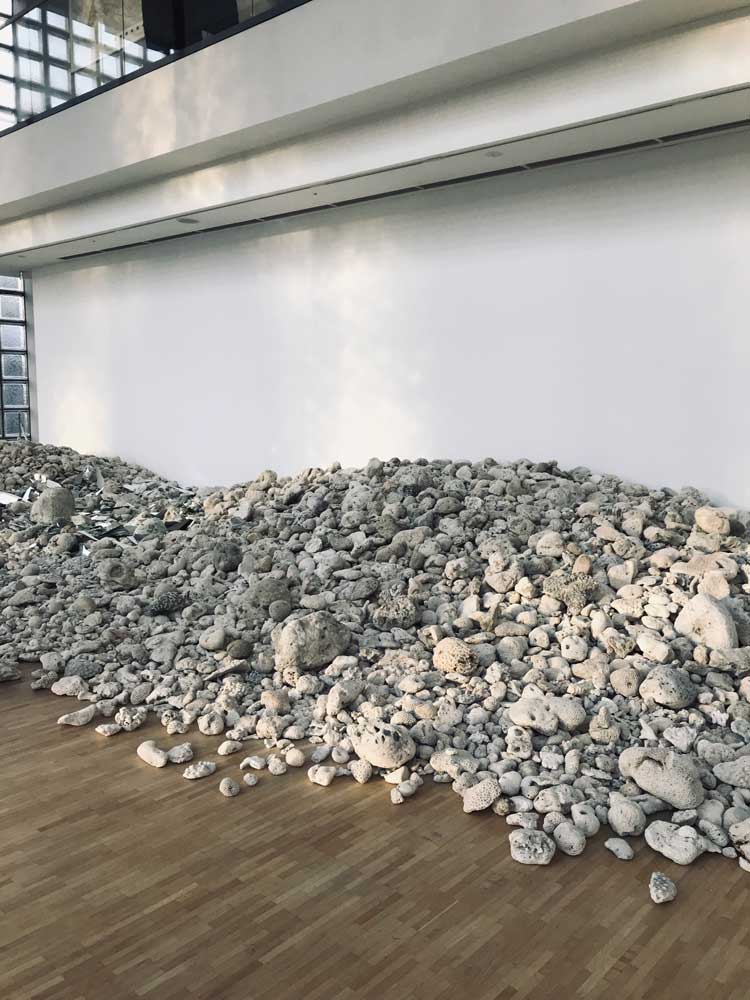
Jaeeun Choi, White Death, 2023. Installation view, La Vita Nouva, Ginza Maison Hermès, Japan, 13 October 2023 – 24 January 2024.
A newly created installation, White Death, comprises thousands of pieces of dead coral spread over the gallery floor. The coral was found on the seashore at Okinawa, the southernmost islands in the Japanese archipelago. Stressed by climate change and nutrients, the coral expels cohabiting algae, which causes it to turn white, bleach and eventually die. “You can see by the difference in colour. This piece with a little bit of brown hasn’t been dead for so long, while completely white ones have been dead for a while,” explains Choi, while she guides us around. The dead coral has been lent by the local authority and will be returned to the seashore after the exhibition. “My works are a meditation. It is my exploration to find ways in which humans and other inhabitants on Earth can live together and not do harm,” says Choi.
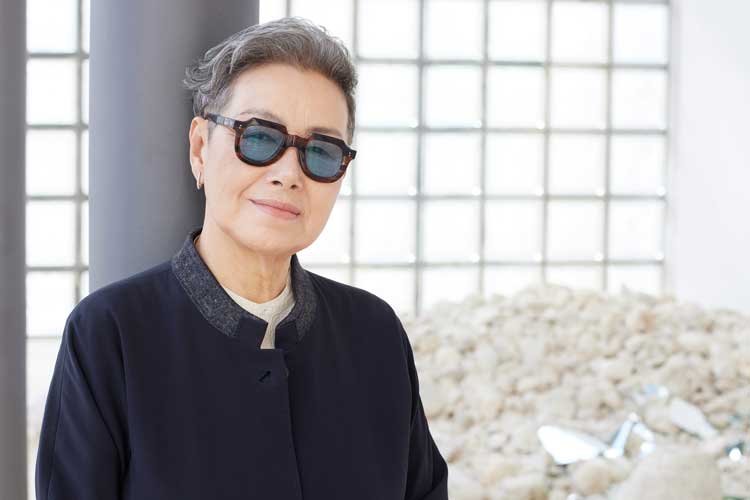
Jaeun Choi portrait. Photo: © Nacása & Partners Inc. / Courtesy of Fondation d’enterprise Hermès.